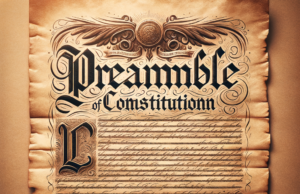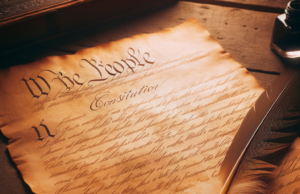Table of Contents

New States and Federal Property in Article 4 of the Constitution
Introduction
Article 4 of the United States Constitution lays out provisions for the admission of new states into the Union and the treatment of federal property within those states. These provisions have played an important role in shaping the course of American history, from the acquisition of new territories to the ongoing debate over statehood for Puerto Rico and other U.S. territories. In this article, we will explore the substance of Article 4 and its implications for the American legal and political system.
Admission of New States
The first section of Article 4 provides the process for admitting new states into the Union. The power to admit new states rests with Congress, which has the authority to admit a new state on equal footing with the existing states. The process typically involves the submission of a state constitution and the ratification of that constitution by Congress. This provision has led to the admission of 37 new states into the Union, with Hawaii being the most recent state admitted in 1959.
Federal Property in New States
The second section of Article 4 addresses the treatment of federal property within new states. This provision ensures that the federal government retains ownership of all land and property held before a new state’s admission into the Union, including military installations, post offices, and courthouses. New states are allowed to tax these properties on the same basis as property owned by private citizens, but they are not allowed to interfere with the federal government’s use of the land.<
Implications for American History
Article 4 has played a significant role in shaping the course of American history, particularly as new territories were acquired and later admitted as states. For instance, the acquisition of Louisiana and Alaska represented major expansions of the American frontier and led to the eventual admission of 13 and 2 new states, respectively. Similarly, the admission of Hawaii and Alaska in the late 1950s signaled the end of a long era of territorial expansion and the beginning of a new phase in American history.
Current Debates
Despite the relative stability of the American Union over the past several decades, debates over the treatment of federal property and new statehood continue to be relevant today. For instance, Puerto Rico has been a U.S. territory since 1898, but its status as a commonwealth has long been a contentious issue. Some advocates argue that Puerto Rico should be granted statehood, while others argue that the island should be granted greater autonomy or even independence. Meanwhile, criticisms have been raised about the treatment of federal properties in states like Nevada and Utah, where large portions of land are owned by the federal government.
Conclusion
Article 4 of the United States Constitution lays out provisions for the admission of new states into the Union and the treatment of federal property within those states. These provisions have played an important role in shaping the course of American history, from the acquisition of new territories to ongoing debates over statehood and federal property. While these issues remain contentious, Article 4 serves as a reminder of the fundamental principles of American democracy and the importance of balancing federal power with the rights of states and territories.
In Section 3 of Article 4 of the Constitution, resides that of “new states and Federal property.” There exist 2 clauses that specify that which has to do with the State as well as the colonies. This first clause specifies that any such State may have permission to garner admission into the Union as set forth by Congress with the foundation of United States law at its back. However, no one State may be created under the rule of another. In addition, no one State may be formed as a result of the combination of various states or portions of states without permission given by that of the State Legislature as well as Congress.
Despite the fact that the Constitution never maintained any specific rule as to the prescribed equality of newly included states, Congress does provide a clause that sets forth such statutes. As these states were not representative of the original colonies, they are seen to be entitled to some right to just and fair proceedings in connection to their inclusion.
An example of the Constitution keeping a safe distance from regulation of equality from one State to another is that which was shown during the presentation of a provision in relation to the State of Alabama. In reference to this case, the Court had struck down the aforementioned provision, in effect stating that the State of Alabama maintain its own individual “sovereignty as well as jurisdiction” over its lands. The Court reiterated that denial of such a State right meant that it would be held in an unequal position in relation to all others.
Doctrines of equality may also work against the favor of a State, however. This is demonstrated by the predicament that the State of Texas had fallen into. Due to its lack of control over a region of water prior to inception into the Union, it thus lost control altogether following it. Some relief was, however, given over to some states in the form of the “Submerged Lands Act of 1953.” This Act returned certain portions of land to states, while still leaving others wanting.
Though not expressly stated within the United States Constitution, the Court stated in Texas v. White that it may allude to the “perpetuity and indissolubility of the Union”. In specific terms, the Court holds that there is potential for such division, though strictly according to each State’s legislative practices.




















